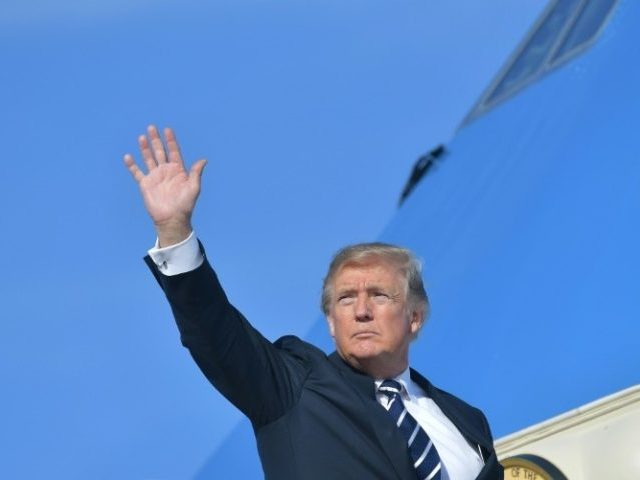Donald Trump has delivered on a key promise that many economists said was impossible: manufacturing jobs boomed in 2018.
The manufacturing sector added 284,000 positions over 2018, its best year since 1997.
The revival of American manufacturing was a cornerstone of Trump’s 2016 campaign promise to Make America Great Again. Many economists derided the idea that manufacturing could boom in the U.S., insisting that a combination of automation and globlization meant that factory jobs were gone for good. Some even accused Trump of attempting to “con” the American people with promises of manufacturing jobs.
Perhaps the highest profile attack on Trump’s manufacturing jobs promise came from then-President Barack Obama.
“Well, how exactly are you going to do that? What exactly are you going to do? There’s no answer to it,” Obama said. “He just says, ‘Well, I’m going to negotiate a better deal.’ Well, what, how exactly are you going to negotiate that? What magic wand do you have? And usually the answer is, he doesn’t have an answer.”
Obama’s skepticism is perhaps understandable. On the campaign trail in 2012, Obama pledged to create 1 million manufacturing jobs in his second term. Instead, the U.S. economy added only 549,000 jobs in manufacturing over the following four years. In his final year in office, manufacturing employment actually contracted. For an administration staffed by people who regarded themselves as the smartest economics minds on the scene, the failure to revive manufacturing jobs likely made it seem like an impossible task.
In fact, in Obama’s entire eight-year term, the economy never added as many manufacturing jobs as it did last year. In Obama’s very best year, the economy added 211,000 manufacturing jobs–and that was building from a very low base because so many jobs had been destroyed by the Great Recession.
The 2018 performance is all the more remarkable because it was not a rebound from a recession. In fact, last year the economy added 207,000 manufacturing jobs.
To put it into perspective, Trump’s economy added nearly as many manufacturing jobs in its first two years than Obama’s economy added in his entire second term.
The MAGA Wand
The manufacturing jobs boom also defies the predictions that tariffs and trade disputes would weigh on domestic manufacturers outside of steel and aluminum. Instead, manufacturing added jobs at a faster clip than the broader economy. And far from being crushed, data in January shows that export manufacturing has not only continued to grow but the rate of growth is accelerating.
These are good jobs making lasting products. About two-thirds of 2018’s new manufacturing jobs are in durable goods, which includes machinery, autos, airplanes, and other big-ticket items.
Economists will no doubt spend years figuring out exactly what gave rise to the Trump manufacturing boom and why so many forecasts were so far off-base. No doubt trade policy, tax cuts, and regulatory reform all played a role. But a good deal of the manufacturing revival is likely based on something less tangible but no less real: the revival of hope. People who believe we can “make America great again” are hiring, starting new businesses, and returning to the workforce.
Maybe Obama’s “magic wand” comment was not so far off. But he should have called it a MAGA Wand.
